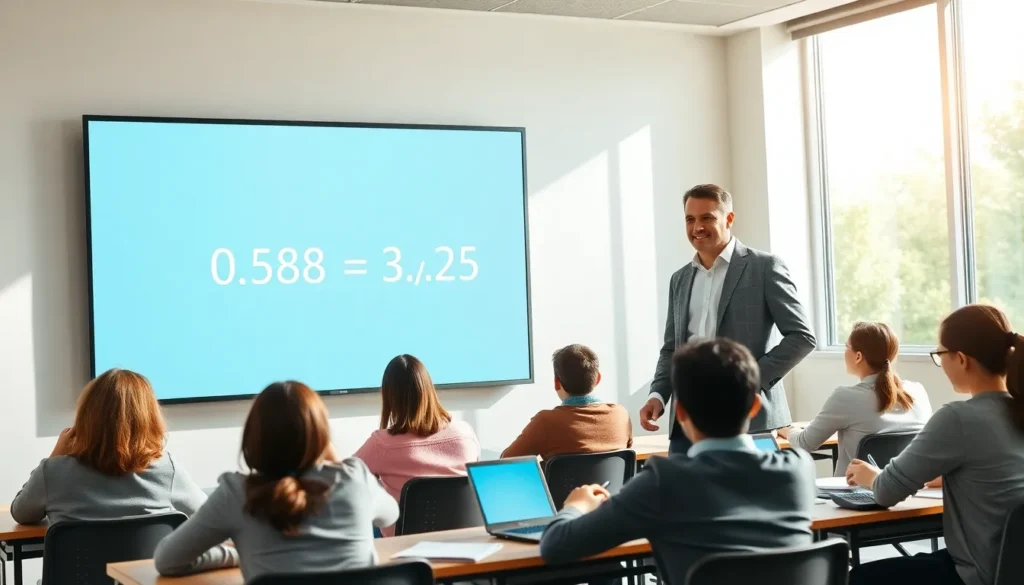Mathematics can often feel like a maze of numbers, but fear not. Today, we’ll unravel the enigma of multiplying decimals, specifically 0.58 by 3.25. Why should you care? Well, if you’ve ever found yourself wondering how to navigate decimal multiplication without feeling like you’re lost in a forest of figures, you’re in the right spot. Popcorn in hand, we’ll investigate into the compelling world of numbers, clear up misconceptions, and equip you with tips that may just make you the decimal guru among your friends.
0.58×3.25

Mathematical Significance of 0.58 and 3.25
When we break down the numbers, we find that 0.58 represents fifty-eight hundredths, while 3.25 translates to three and a quarter. Each digit holds significance, influencing various calculations. These decimals appear frequently in scenarios like financial calculations, scientific measurements, and everyday tasks such as shopping and budgeting. So, understanding their interplay becomes not just useful but essential. In particular, recognizing the value that decimal places contribute to computations can be the key to accuracy in results.Applications of 0.58×3.25 in Real Life
The multiplication of 0.58 and 3.25 isn’t just reserved for classrooms. In fact, it has real-world applications.Calculating the Product of 0.58 and 3.25
When you multiply these two values, the answer is approximately 1.885. This result can appear in various contexts, such as needing to calculate a 0.58-gallon syrup recipe for a cake that serves 3.25 people or determining a discounted price when shopping where prices are often quoted in decimals. Simply put, mastering this multiplication operation can directly impact everyday decisions.Common Misconceptions About Decimal Multiplication
But, like many mathematical concepts, misconceptions abound. Some people believe that multiplying decimals involves simply ignoring the decimal points or treating them as whole numbers. This notion couldn’t be further from the truth. Students often struggle with the placement of decimal points in their answers. It’s crucial to remember that the decimal point in the product corresponds to the total number of decimal places in the factors. Hence, keeping track of the decimals is essential for achieving accurate results.Exploring Related Mathematical Concepts
Understanding 0.58×3.25 introduces several related concepts in mathematics.Importance of Precision in Decimal Calculations
When multiplying decimals, precision becomes paramount. The smallest mistake can lead to a significant error in results. Hence, it’s essential to recognize the importance of decimal places and rounding. Whether in academic settings or real-life applications, mathematical precision often determines outcomes. This concept of precision is vital, impacting everything from science experiments to financial reports.Tips for Mastering Decimal Multiplication
Mastering decimal multiplication may seem daunting, but with practice, it becomes second nature. Here are some tips to help break it down:-
- Understand Place Value: Knowing the value of each digit is crucial when multiplying decimals. This awareness enables more accurate calculations.
-
- Use Visual Aids: Sometimes, visualizing the multiplication process can make a big difference. Draw out the numbers or use tools like grids and charts.
-
- Practice Regularly: Like any skill, practice makes perfect. Set aside time to work with various decimal combinations.
-
- Check Your Work: After computing, verify your results. Cross-referencing with a calculator can ensure accuracy and build confidence.

